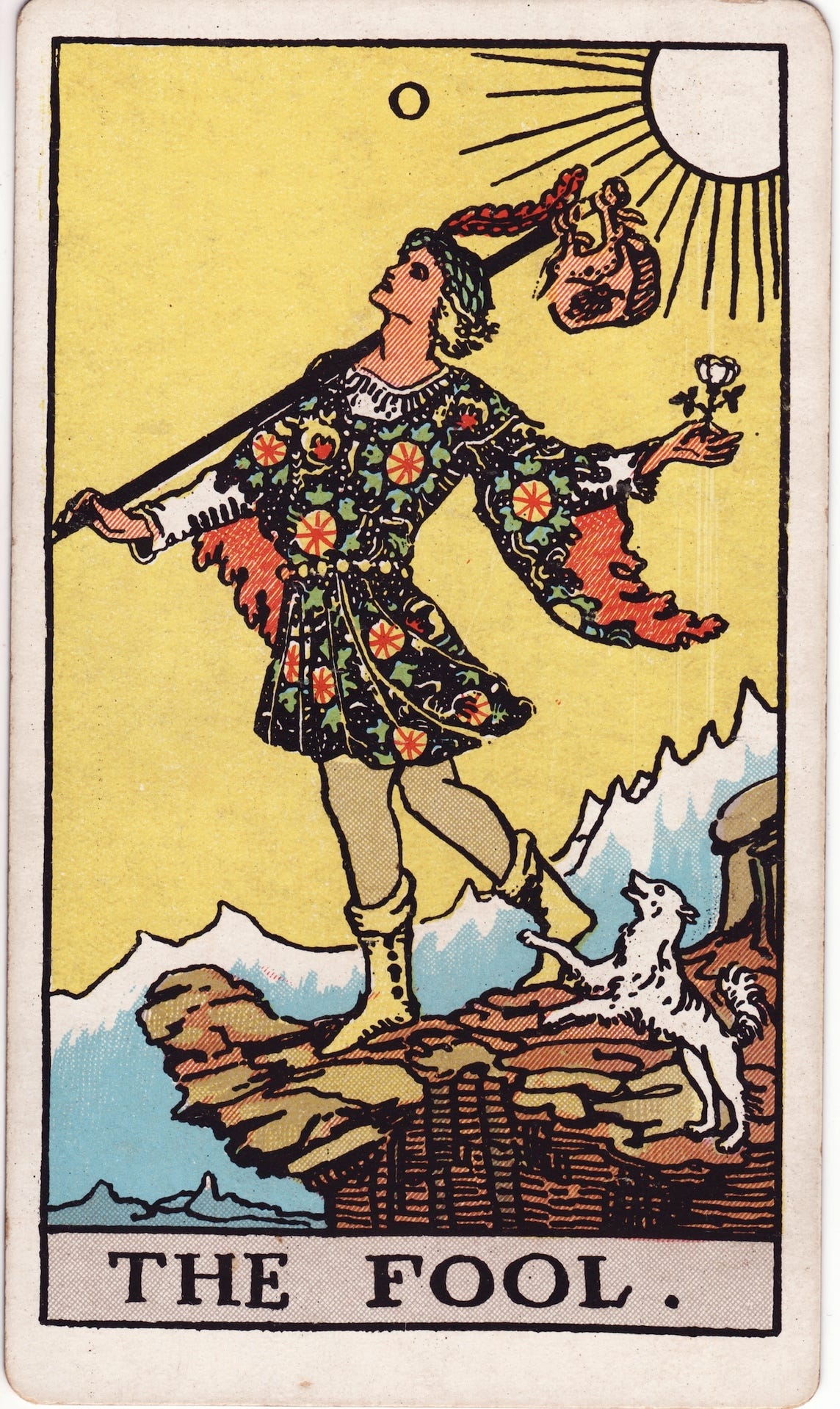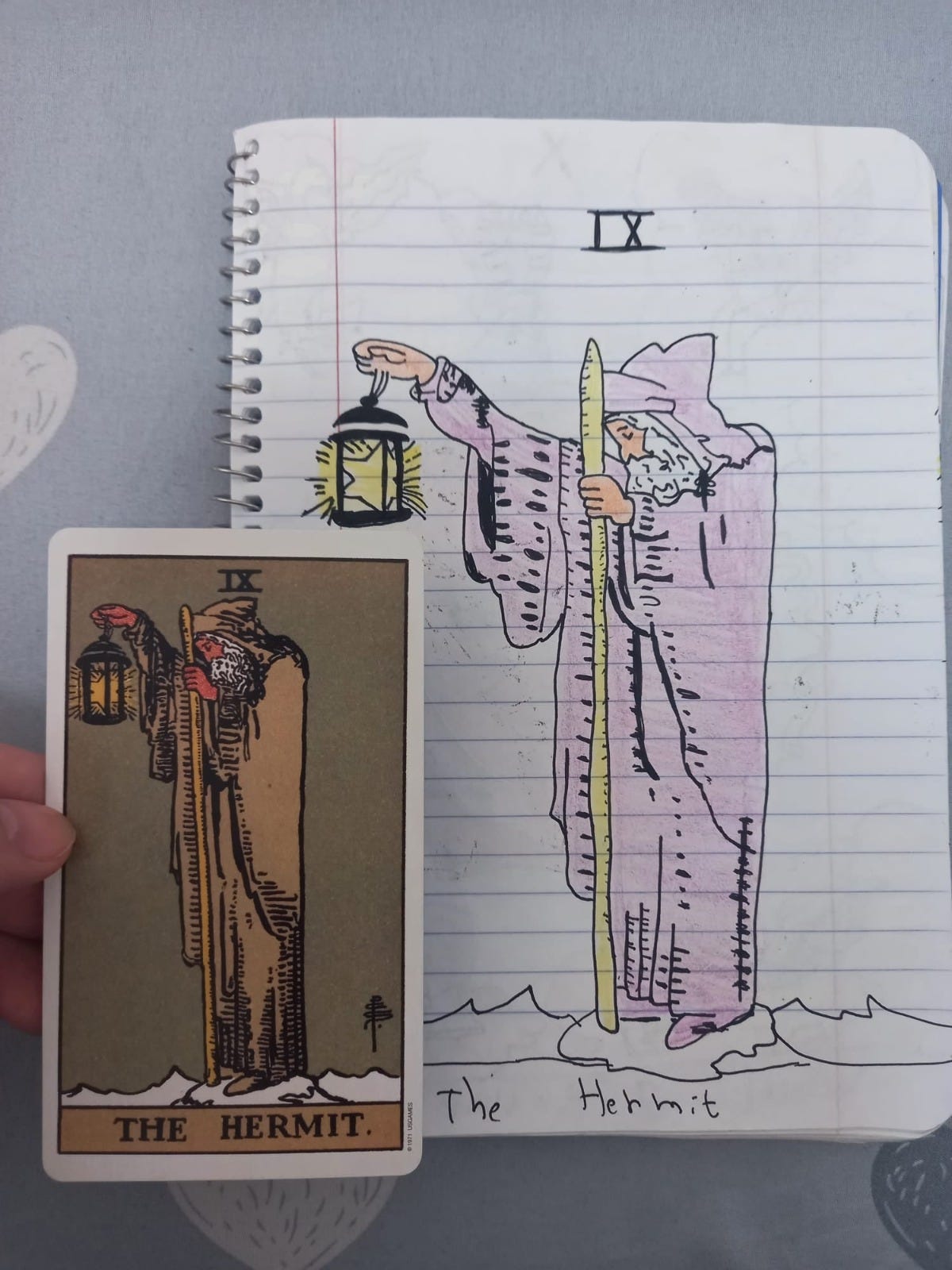- The Library of Babel
- Posts
- How I Learned to Stop Worrying and Love the Tarot
How I Learned to Stop Worrying and Love the Tarot
And how can you study this amazing tool
There is definitely no one way to study the Tarot as a beginner, just like there isn’t any one way to read the Tarot. By that I’m not just referring to the different spreads. Anyone who ever read two books on the Tarot knows that each commentator essentially invents his or her own method of decoding the symbols each card holds.
The way I got to know the Tarot was through my hands – by drawing each and every card of the Rider–Waite–Smith deck.
It was almost by accident that I got to know the Tarot. After a few years tryisng and failing to write a novel I felt I was proud of, I decided that maybe what I needed was to combine my writing with another art form. Drawing looked like the inevitable option for me. I draw a lot as a kid and creating a Comics (as far is this Alan Moore’s fan was concerned) was the next best thing to finishing a novel. And so I began learning how to draw online.
I wanted to find a project – preferably a daily one – with some connection to literature or more broadly speaking to intellectual spheres. I don’t quite remember how I got interested in the Tarot but a friend send me a deck by mail - that was during the pandemic - and so I draw one card a day and posted each drawing the next morning on my Facebook account. To each card I would add a quick explanation I found on Wikipedia, or, if I felt super fancy, some words from A. E. Waite’s ‘The Pictorial Key to the Tarot’ – a book that came in the mail with my deck. Soon enough I added my own reflections to each of the cards I draw. And at times, even a few verses by William Blake or other romantic poets that seemed appropriate. Those explanations were mainly for me. They were what I learned about the Tarot each day.
My infatuation with the Tarot coincided another, much more spiritual process I was experiencing at the same time. After years of being an atheist in the vein of Richard Dawkins, seeing myself as a rationalist who does not believe in anything science can’t prove, after years of acting in annoying and shallow ways (let’s be honest here) - something in my convictions started to break. Firstly, I made the mistake of pursuing a degree in the Humanities – which made me realize, the deeper I got into it, that there are all these various ways to look at the world, and to study people and cultures, that are not necessary mutually exclusive but sure can seem contradictory.
My original plan was to study in order to become an historian but starting my masters in American history felt limiting in a way. And something about the academia didn’t fell right anymore. So I quit my studies and decided to write about stuff that interested me, but writing now for the general public. I found a job as an editor and writer at the National Library of Israel and was finally confronted with writing and learning about Jewish history, thought and Theology. I found that I loved it. That I was interested in it. That I wanted to learn more about Judaism, the same way I was interested in University studying Christian history or ancient Greek and Roman history. I realized something important then: That it’s not my heritage that I was running away from – just the strict religious laws that I was supposed to adhere to. Basically, I wanted the magic – for lack of a better word – just without the policing that mostly came along with it.
I wanted to be the fool, but also the magician. To be open to new learnings, but not get bog down with the directives. To be an atheist that can sometime believe. Or, to put it another way – to not care if I believe or not and in what exactly. In that path – the Tarot was instrumental.

I stopped drawing around card number 50 something... somewhere in the Sword Suite. It’s not that I felt that drawing was too much work, just that it’s the wrong kind of work for me: Combining another art form with my writing worked so well that my fiction writing was saved somehow. With drawing and the Tarot, I dug myself out of the hole I was in. The drawing I left in that hole. The Tarot I carried with me ever since

There are many ways to study the Tarot. Books and courses and videos are available in bookstores and online. But the members of the Hermetic Order of the Golden Dawn - probably the most important secret society for the study of the occult and metaphysics in modern history - had their own unique way. And because two members of the Golden Dawn would subsequently design the two most influential and popular tarot decks of the New Age declared by the Order1, we might want to listen. The Golden Dawn treated the Tarot as a work of art. And it obviously is – a fact that wasn’t obvious at all until a friend pointed it out to me.
The initiate would study a card and try her best to memorize it. After that she would draw and paint that same card from memory. Finally, she was to compare her work with the card itself. It isn’t entirely clear what she was meant to focus on in that last stage: the gaps she left out? The things she draws that weren’t there? And / or changes she made? After comparing her drawing to the card – the process of memorizing, drawing and comparing began once more. And then again. Until the copy was deemed satisfactory.
O.k. I might have overstated the Golden Dawn’s treatment of the Tarot as a work of art. It might be more accurate to say that art was used as a method to study a sacred object: The Tarot cards. No creativity was allowed in this. At least not in the sense of forming a response to the cards with personal expression.
In his book ‘Real Presences’ George Steiner postulate a culture without the concept of art criticism. The only way open for a person to react to a work of art that person was moved by, was to create another work of art, his own. In a way that is my goal with the Tarot. I want to think about the Tarot in writing - to learn for myself and maybe even teach others through writing non-fiction texts about the Tarot, but I also want to create works of art inspired by the Tarot. I’d love to write a novel comprised of short stories about the Tarot, and even design my own Tarot deck. A Digital Tarot deck.
Unlike the “regular” Tarot, the Digital deck I envision would represent the virtual world of the Internet. In that world The Fool is named The User. And The Magician is The Programmer and so on. I hope I’ll be able to finish it one day. Maybe with your help.
Thanks for reading The Library of Babel! Subscribe for free to receive new posts and support my work.